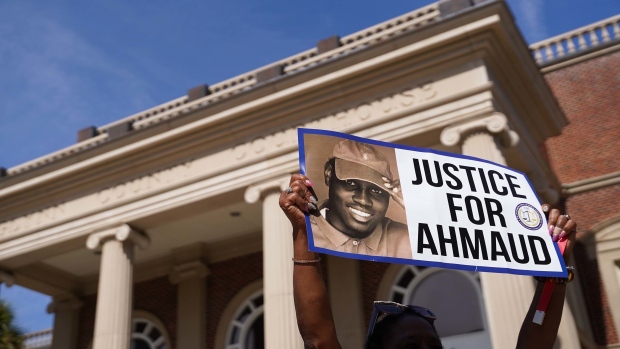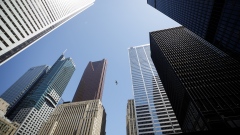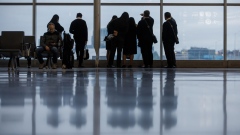Nov 22, 2021
Arbery Was Killed for Being a ‘Black Man Running,’ Jury Told
, Bloomberg News

(Bloomberg) -- Ahmaud Arbery, the 25-year-old unarmed Black man killed last year while jogging in a quiet Georgia neighborhood, posed no threat to anyone when he was gunned down in a confrontation with three White men, a prosecutor told the jury in their murder trial.
The men, including Travis McMichael, who pulled the trigger, chased Arbery “because he was a Black man running down the street,” Cobb County Assistant District Attorney Linda Dunikoski said in closing arguments on Monday.
“They all acted as a party to a crime,” Dunikoski told the jury. “But for their actions, but for their decisions, but for their choices, Ahmaud Arbery would be alive.”
The state’s closing argument will be followed by closing statements to the jury by the defense lawyers.
On Heels of Kenosha
The closing arguments in the racially charged case come three days after a jury in Kenosha, Wisconsin, acquitted 18-year-old Kyle Rittenhouse of all charges in the shooting deaths of two men and the wounding of a third at a chaotic Black Lives Matter protest last year. The jury in that case, which like the Georgia panel was made up of 11 White jurors and one person of color, accepted Rittenhouse’s argument that he brought his AR-15-style semiautomatic rifle to the demonstration to protect local businesses from looting and that he fired only in self-defense.
And, as in the Rittenhouse case, the evidence in the Arbery trial includes graphic video of the February 2020 killing.
The three defendants in the Georgia case are McMichael; his father, Greg McMichael; and their neighbor William “Roddie” Bryan, who helped block Arbery with his vehicle. They pleaded not guilty and claim self-defense. Dunikoski told the jury that their defense is illegitimate, because they were the ones who provoked the violence. And they can’t credibly claim they were making a citizen’s arrest, as they do, because they didn’t witness Arbery commit a crime, she said.
“This case is really about assumptions and driveway decisions,” Dunikoski said. The three men “made assumptions based on gossip and rumors” about break-ins in the neighborhood, with no “probable cause that a crime had been committed.”
The charges include felony murder, false imprisonment and aggravated assault with a 12-gauge shotgun and two pickup trucks.
Racist Language
The state acknowledged that Arbery was caught on camera several times entering a house that was under construction in the area, but he “never took anything, never damaged anything,” Dunikoski said on Monday. Others, including White people, were also caught on camera wandering around the construction site. She called Arbery a “lookyloo” who was trespassing.
“But they didn’t know that,” Dunikoski said of the defendants. “They had no immediate knowledge of that.”
One of the defense attorneys last week claimed the rallies in support of Arbery’s family outside the courthouse amounted to a “public lynching” of the defendants, a potentially inflammatory choice of words given the long U.S. history of White people lynching Black Americans.
Bryan’s attorney Kevin Gough last week asked the judge to declare a mistrial on the grounds that Al Sharpton, Jesse Jackson and Martin Luther King III had joined hundreds of Black pastors to protest, which he argued was an attempt to sway the jury. Superior Court Judge Timothy Walmsley denied that request.
During the trial, Walmsley barred evidence that Travis McMichael used a racist word to describe Arbery as he lay dying. The judge also refused to let the jury hear evidence of Arbery’s criminal record.
Arbery’s death became a central part of the Black Lives Matter protests that swept the U.S. last year after the May 2020 killing of George Floyd by a White Minneapolis police officer.
©2021 Bloomberg L.P.








